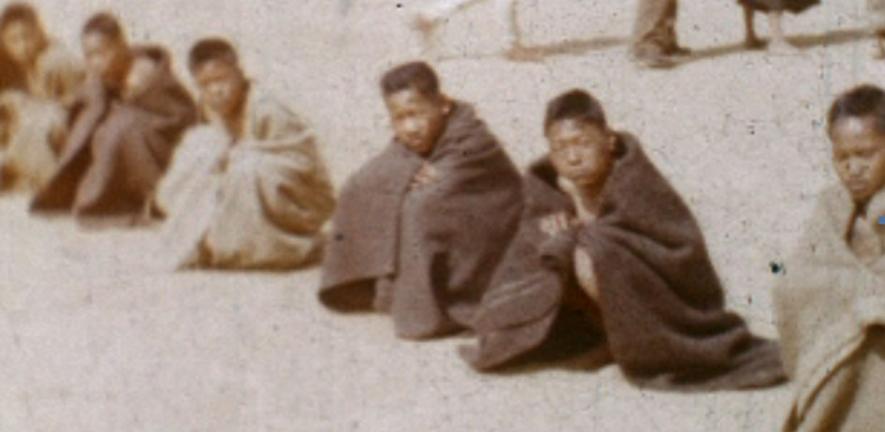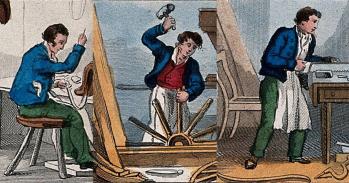
After years of being overlooked as a film genre, amateur cinema is finally being recognised by academics as a form that merits serious study in its own right, offering a surprisingly candid eye on people and the past. Now a new research network will, for the first time, bring their work together in one place.
After years of being overlooked as a film genre, amateur cinema is finally being recognised by academics as a form that merits serious study in its own right, offering a surprisingly candid eye on people and the past. Now a new research network will, for the first time, bring their work together in one place.
People used to say that one couldn’t study amateur films the same way that you might look at the Western or the Film Noir genres. But that hasn’t stopped amateur films from existing, or scholarship on the subject coming out.
Annamaria Motrescu
The first ever international network dedicated to the study of amateur cinema has been set up, reflecting the growing importance of home movies in academic research.
The Amateur Cinema Studies Network (ACSN), https://amateurcinemastudies.org/, aims to be a virtual space for the growing number of people around the world who use home movies and amateur films for teaching and research in social sciences. Users will be able to share ideas, find new resources and get information about projects and different archives around the world. The Network will also run conferences and touring exhibitions.
To mark the launch, a clip from one such amateur film, which features rare and important footage of Gurkhas being recruited by the British Army in the 1950s, is being released on the Network’s new website, https://amateurcinemastudies.org/editors-choice/
Dr Annamaria Motrescu, the researcher at the University of Cambridge who set the ACSN up, said that there was a growing recognition among historians, anthropologists and other researchers that amateur cinema can be a valuable tool for people trying to understand more about their heritage, or different places and cultures.
“The inspiration for the project comes from the thesis I wrote for my PhD, in which I argued that amateur cinema should be considered a film genre in its own right,” Motrescu said. “People used to say I was wrong, and that one couldn’t study amateur films the same way that you might look at the Western or the Film Noir genres. But that hasn’t stopped amateur films from existing, and it hasn’t stopped a huge amount of scholarship on the subject coming out.”
The Gurkha film is taken from nearly 30 hours of newly digitised footage held by the Centre of South Asian Studies in Cambridge, where Motrescu is a research associate. It was donated to the University by Mrs. Frankie Williams, the niece of a tea planter who stayed on in India after independence and who made the original footage. The Centre houses a large archive of amateur films made in India and other South Asian countries, some of which pre-date World War II.
This film captured the recruitment of men from Himalayan villages, some of them as young as 16. The silent, colour movie shows them standing and shivering as they are inspected by British Army officers. Researchers believe that it was made in or around the year 1950.
“What’s interesting about this film as an historical document is that a very similar, official film, was made by the British Government at around the same time,” Motrescu said. “The contrast with this in the Williams film is fascinating. None of the Gurkhas has been told to perform for the camera, they’re not happy or smiling and there is no sense that they are somehow willing agents involved in the recruitment process. Against the mass-produced, Government version of similar events, this is a rare visual record of what actually happened when these young boys were drafted, and before they were sent to risk their lives on behalf of the United Kingdom.”
As with many amateur films, the significance of the Williams footage is, Motrescu says, not what it says about the British recruitment process itself, but the insight it offers into the experiences of ordinary people - the Gurkhas themselves. While many professional filmmakers have dedicated themselves to recording social history for as long as documentary cinema has existed, most do so with a particular narrative in mind.
This is rarely the case with amateur filmmaking, which means that often it offers a more candid and dispassionate view of what was actually happening. Like Motrescu’s argument in her PhD, large numbers of researchers increasingly argue that such films deserve their place as documents meriting academic study.
That recognition has been a long time coming, however. Building on work by social scientists and humanities scholars during the 1980s, Patricia Zimmerman’s ground-breaking book, Reel Families: A Social History Of Amateur Film, was the first significant analysis of the subject and was published in 1995.
By 2010, conferences on the subject of amateur film were attracting up to 200 scholars, including historians, anthropologists, psychologists and gender studies specialists, among others. Despite this interest, no formal international network acknowledging that amateur cinema is the subject of a wide range of cross-disciplinary concerns has ever existed, until now.
Unlike other amateur film associations, the ACSN will attempt to serve this community of researchers, by creating a forum online where they can discuss, debate, and share information. The Network will develop templates for teaching students about amateur cinema and promote the inclusion of such films in film and media studies courses. It will also provide users with information about archives and collections, and organise conferences and events for both the academic community and the public.
The ACSN has also recently agreed to be one of the partner organisations supporting the first international web-documentary project dedicated to the Super 8 practice and film culture, a project currently developed by Spring Films (www.springfilms.tv), a London based production company developing international co-productions and high-end documentaries.
“Amateur film can play an important role in rewriting personal as well as national histories, and making them available to us now - not in a voyeuristic manner, but one which tells us more about what people felt like at the time,” Motrescu added. “They provide us with a window on to history which is both public and private at the same time.”
This work is licensed under a Creative Commons Licence. If you use this content on your site please link back to this page.





